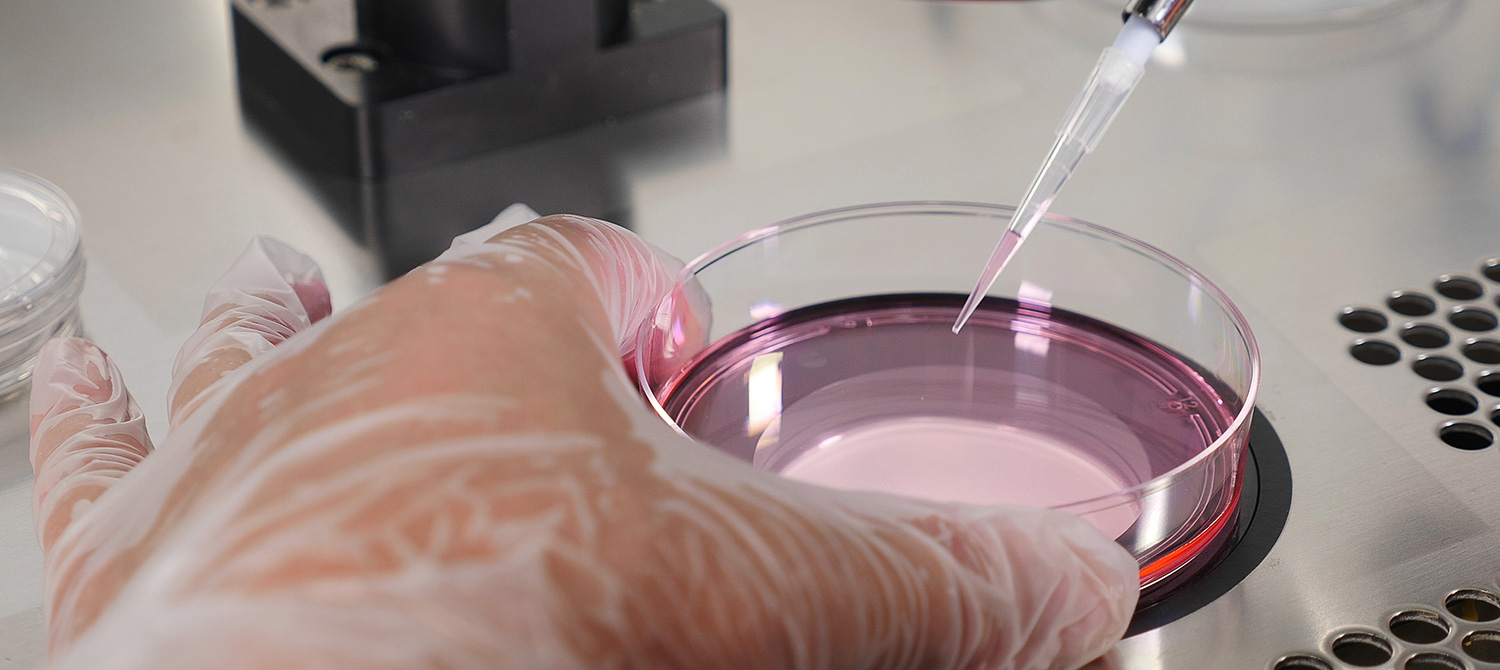Conventional stimulation IVF

This is the “classic” stimulation protocol used and the primary technique employed for most women and couples seeking assisted reproduction treatment. The programme entails the use of hormonal ovarian stimulation with the aim recruit and induce the growth of multiple follicles, resulting in the collection of multiple oocytes during oocyte pickup.
Conventional stimulation IVF has several different steps:
- Basic diagnostic testing
A collection of fertility assessment tests, which aim at evaluating your health status and indicating the optimal stimulation method for you. - Baseline monitoring with blood tests and ultrasound.
This is at the beginning of your menstrual cycle to evaluate baseline ovarian status and function, ensure optimal initial conditions to begin stimulation, define a benchmark for ovarian response assessment during stimulation and provide information for dosage individualisation. - Ovarian stimulation
Stimulation using subcutaneous gonadotropin injections and/or oral medication. - Cycle monitoring
Conducted via transvaginal ultrasound and hormonal measurements. These measurements facilitate constant assessment of the cycle progress and allow for minor adjustments, in order to ensure optimal stimulation outcome. Monitoring becomes more frequent as the cycle progresses. - GnRH antagonist
Injection of GnRH antagonist may be administered to prevent premature ovulation before the completion of the stimulation. - Ovulation triggering
When most follicles have achieved adequate growth, ovulation triggering may be performed to achieve final maturation and oocyte retrieval scheduled accordingly. - Oocyte pickup
Oocyte pickup is a minimally invasive procedure that entails the aspiration of the follicular fluid that contains the mature oocytes. This procedure is performed under total intravenous anaesthesia and does not require intubation or mechanical ventilation. The oocytes are obtained transvaginally with a fine aspiration needle under ultrasonographic guidance. - The next step
Subsequently, the collected oocytes are fertilised using IVF and/or ICSI. Alternatively, oocytes may be cryopreserved in the context of fertility preservation. - In the Lab
The fertilized embryos are incubated in conditions that resemble the natural endometrial environment and their growth and eventual morphological quality are closely monitored. In cases of increased risk for chromosomal or other genetic abnormalities, PGT may be performed at this stage. - Embryo transfer
The incubated embryos are transferred on the 3rd or 5th day (blastocyst stage) of incubation (fresh embryotransfer). Embryotransfer is a painless procedure and is usually performed without anaesthesia. It involves the insertion of the embryo directly in the uterine cavity via a specialized catheter under ultrasonographic guidance. - Embryo cryopreservation
Any remaining embryos may be cryopreserved and utilized in the future, after a thawing and preparation process (frozen embryotransfer). Alternatively, in conventional IVF cycles where a fresh embryotransfered is contraindicated or unwanted, all resulting embryos may be cryopreserved for future use (freeze-all protocol).
Conventional ovarian stimulation and IVF are indicated in most cases of infertility as an effective solution, namely for couples or individuals with:
Modern conventional stimulation IVF offers several advantages, such as:
- Higher oocyte yield per treatment (no need for multiple cycles as in other options).
- Multiple embryos available for transfer
- Option to cryopreserve surplus embryos for future use
- Modern protocols ensure minimization of adverse effects and Ovarian Hyperstimulation Syndrome (OHSS)
